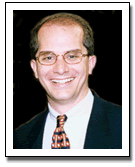| Best
Media Event Tips: |
|
• Seek
coverage only for
newsworthy events.
• Distribute a
clear, concise media
advisory.
• Make the
event easily
accessible to the
media.
• Have a
professional, friendly
media check-in
• Provide a
useful press kit.
• Give
journalists their own
clear space at the
event.
|
|
|

|
|

|
|
|
|

|
|

|
|
|
|

|
by
Andrew
Garlikov
ProAdvance
 In
order to increase the likelihood
that the media will cover your
press conference or promotional
event, you need to make it as easy
as possible for journalists to
attend by removing every
logistical obstacle.
In
order to increase the likelihood
that the media will cover your
press conference or promotional
event, you need to make it as easy
as possible for journalists to
attend by removing every
logistical obstacle.
Press Releases and the Media
Advisory
The process starts with press
releases and a media advisory.
Think of a press release as the
brochure and a media advisory as
the invitation
that you send.
Press releases give journalists
the reasons why they should come
to your event. They announce
content items: who is
speaking; what they will speak
about; and why the event is
important to the media's
audience. This pitch will
vary depending on the nature of
your event and the media you are
targeting.
The media advisory, a separate
single-page document, gives
journalists the logistical details
about your event: when, where, and
how they can cover it. The focus
of the media advisory should be on
making it as easy as possible for
reporters to find and cover your
story.
Parking
Experienced event planners know to
provide parking for the
media. Reserved media parking
should be close to the
venue. Whenever possible,
offer to validate
parking. (If you intend to
validate, be sure to say so in
your media advisory!) If you
expect live television coverage of
your event, bear in mind that
parking can be tricky for
microwave or satellite trucks,
whose crews need to 1) run cables
from their trucks to the camera
platform; and 2) send a signal
back to their station.
Consult the venue manager to find
out where television stations have
parked their trucks in the past.
In order to encourage and prepare
for television coverage, include
on your media advisory the phrase,
"Please advise if you are
planning live coverage."
Media Check-In
Have a separate, well-marked table
for media check-in. People
handling the check-in table should
be familiar enough with the event
to answer logistical questions,
but they should not be expected to
answer questions on the
record. They should help
journalists sign in as they check
their credentials, thereby
allowing the communications staff
or PR firm to know exactly who
attended. Offer journalists a
press kit and a copy of any other
event materials you want them to
have, then have them escorted to
the designated media areas.
The Media Area
Always try to provide a reserved
area for journalists. A small
area for writers, set up classroom
style, will allow them to work
comfortably during the
event. Reporters with laptop
computers will be grateful to you
for making electrical power
available to them via extension
cords and power strips.
Providing food and drink in this
area is optional, but if your
event is going to keep reporters
on site through meal times, snacks
and sodas will be greatly
appreciated.
Camera Platform
If you expect television coverage,
provide a sturdy platform for
cameras. It should be at the same
level as the stage, and provide an
unobstructed view. In order
to avoid the "microphone
nest" that characterizes
untidy press conferences, be sure
to provide a clean audio feed
through an audio mult feed, or
"mult box," with
enough outputs to accommodate your
expected media turnout. (The
audiovisual contractor should be
able to provide this.) Have the
venue provide electrical power to
the camera platform for the use of
camera crews.
Following these simple guidelines
will not only increase the chances
of media coverage for your event,
but should enable the media to
focus on the message of your event
rather than have them distracted
by the difficulties of covering
it.
Andrew
Garlikov is president of
ProAdvance, an event production
firm that specializes in
PR-oriented events, such as
press conferences and product
launches. For more information,
visit www.proadvance.com,
or email andy@proadvance.com.
More
Articles | Submit
Your Article | PR
Subjects
About
Public Relations Homepage
Contact Us
|



